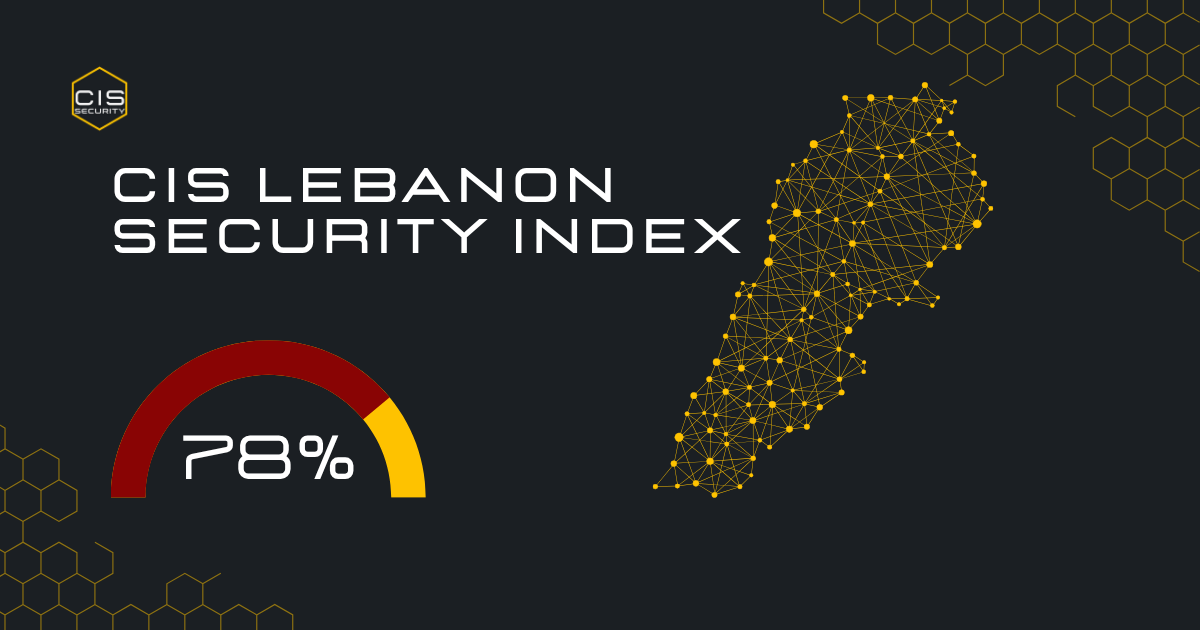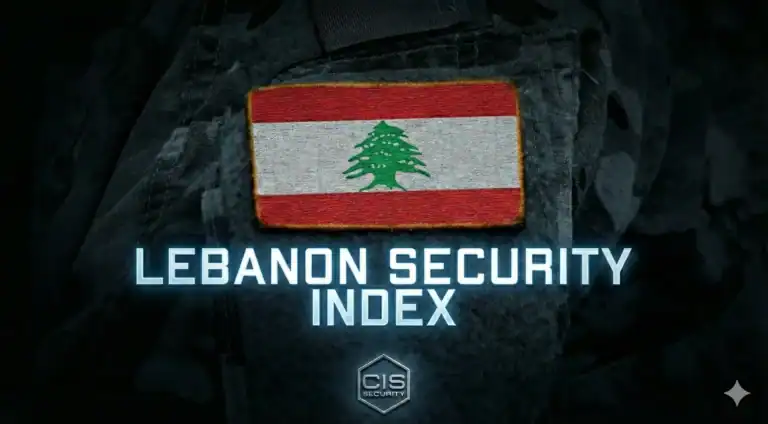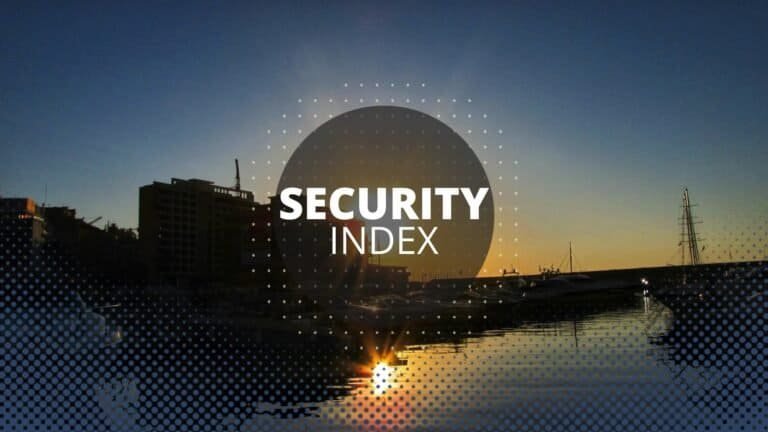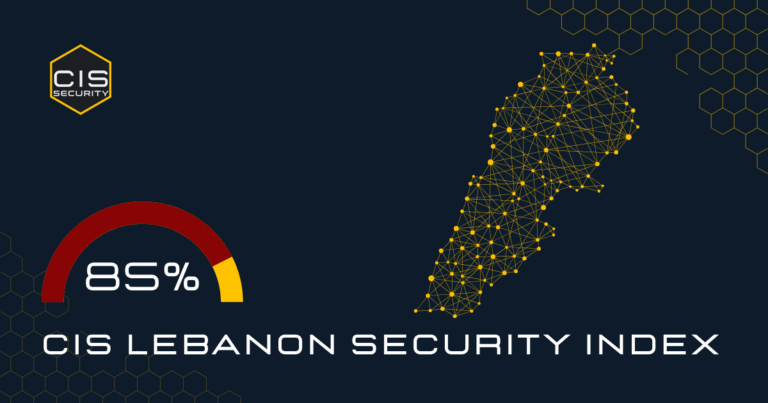Lebanon Security Index July 8 2025
Lebanon Security Index July 8 2025
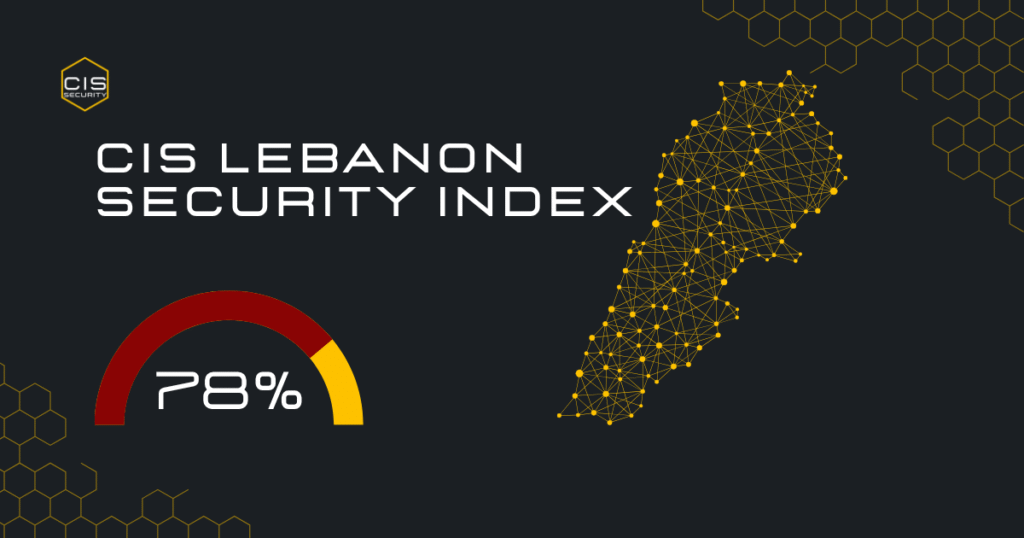
Part I: National Security Synopsis
This section establishes the national-level security posture, providing the top-line assessment and dissecting the primary forces shaping the current threat environment.
The CIS Security Meter™: National Assessment
- METER LEVEL: 🟠 HIGH
- TODAY’S OVERALL READING: 78/100
- TREND: ⚡ VOLATILE
Principal Drivers of the National Threat Level: An Analytical Overview
The national security rating of 78/100 (HIGH) with a VOLATILE trend is driven by a convergence of three critical dynamics. The security environment is not simply a continuation of low-level conflict but is characterized by a deliberate escalation of kinetic military action timed to influence high-stakes diplomacy, a fundamental misunderstanding of the “ceasefire” in place, and the Lebanese state’s ongoing struggle to assert a monopoly on force.
Lebanon Security Index July 8 2025
Driver 1: Coercive Diplomacy through Kinetic Action
The security landscape of the past 24 hours has been dominated by a calculated pattern of Israeli military operations that function as a form of coercive diplomacy. These actions are not random but are strategically timed to coincide with the visit of U.S. Special Envoy Tom Barrack to Beirut. The envoy’s mission is to receive and discuss the Lebanese government’s official response to a U.S. proposal centered on the disarmament of Hezbollah.
This linkage between military action and diplomatic pressure is evident in the timing of the attacks. A significant wave of Israeli airstrikes and ground incursions across southern Lebanon and the Bekaa Valley occurred “on the eve of” or “hours before” the envoy’s arrival. These operations were widespread, targeting locations such as Burj Rahal and Zrariyeh in the Tyre and Sidon districts, and Deir Kifa, Beit Lif, and Aita al-Shaab in the south, resulting in at least two confirmed fatalities and more than ten injuries. Lebanese officials and diplomats have explicitly interpreted this escalation as a deliberate “attempt to increase pressure on Hezbollah ahead of diplomatic discussions”.
https://cissecurity.net/how-to-choose-the-best-security-company-in-lebanon/
This dynamic represents a weaponization of escalation for diplomatic leverage. By demonstrating military superiority and a willingness to inflict damage at a moment of maximum political sensitivity, Israel is actively shaping the negotiating environment. This makes the situation exceptionally volatile. The use of force as a communication tool carries a high risk of miscalculation. An unintended consequence, such as higher-than-expected civilian casualties or the accidental targeting of a sensitive site, could easily derail the diplomatic process and provoke a significant retaliatory response from Hezbollah, potentially triggering a wider conflict. The current violence is, therefore, best understood not merely as fighting, but as a form of violent negotiation.
Driver 2: The Semantic Fallacy of the “Ceasefire”
A core source of instability is the dangerous gap between the diplomatic language of a “ceasefire” and the violent reality on the ground. A formal ceasefire agreement between Israel and Hezbollah, brokered by the U.S., went into effect on November 27, 2024. However, the term “ceasefire” implies a mutual cessation of hostilities, which is not reflected in the operational data.
Since the agreement was signed, Israel has committed nearly 3,900 air, land, and maritime violations, resulting in the deaths of at least 196 people and the wounding of approximately 450 others in Lebanon. The events of the last 24 hours are a direct continuation of this established pattern. In stark contrast, Lebanon has largely upheld its commitments under the agreement. There have been only two documented incidents of rocket fire toward Israel, both of which were traced to a Palestinian Hamas-affiliated group acting independently of Hezbollah. The perpetrators were subsequently apprehended by Lebanese authorities.
This profound asymmetry creates a dangerously misleading narrative. For the international community and for internal Lebanese actors, the existence of a “ceasefire” provides a false sense of security and de-escalation. In reality, the agreement has become a framework for continued, low-to-medium intensity conflict initiated almost exclusively by one party. This dynamic erodes trust in diplomatic solutions, empowers hardliners who view the agreement as a strategic failure for Lebanon , and continuously lowers the threshold for a major retaliatory attack from Hezbollah should a perceived “red line” be crossed. The term “ceasefire” itself has become a source of strategic ambiguity and risk, masking a state of persistent, one-sided aggression.
Driver 3: The State’s Struggle for a Monopoly on Force
The third driver of the national threat level is the Lebanese state’s precarious and ongoing struggle to establish its authority and a monopoly on the use of force. This struggle is evident on two distinct levels.
At the micro-level, the Lebanese Armed Forces (LAF) are demonstrating a will to enforce state law within civilian areas. Following an unauthorized armed appearance by gunmen during an Ashura rally in the Zuqaq al-Blat area of Beirut on July 4, the LAF’s Intelligence Directorate conducted surveillance and tracking operations, culminating in the arrest of one of the armed suspects on the Jezzine-Jbaa road. This action represents a clear, albeit localized, assertion of state authority against internal challenges to its monopoly on force.
However, this micro-level success is completely overshadowed by the macro-level security reality. The LAF is fundamentally incapable of preventing or responding to the primary source of national insecurity: Israeli military operations. The state and its security apparatus are bystanders to the airstrikes, drone attacks, and ground incursions that define the security environment in the South and the Bekaa. This reality is compounded by the fact that the subject of the U.S. envoy’s disarmament mission is Hezbollah, an entity widely described as the “most powerful military force” in Lebanon, far exceeding the capabilities of the state’s own army.
This creates a bifurcated security reality where the state’s authority is fragmented. It can act against smaller, internal infractions but is impotent in the face of the larger, existential conflict that dictates the national security level. This dynamic constantly tests the state’s legitimacy, weakening its position both internally and externally, and relegating its entire security apparatus to a fundamentally reactive, rather than proactive, posture.
Part II: Governorate-Level Threat Matrix
The national security assessment is an aggregate of varying risk levels across Lebanon’s nine governorates. The threat is not uniform; it is heavily concentrated in the south and east, with a significant drop in risk in the central and northern coastal regions.
Table: Governorate Security Ratings at a Glance
The following table provides a summary of the security ratings for each governorate, offering a clear overview of the national threat landscape.
| Governorate | Reading (0-100) | Color | Status | Key Factor |
| South Lebanon | 95 | 🔴 | Active Conflict | Multiple Israeli airstrikes, drone attacks, ground incursions, and civilian casualties. |
| Nabatieh | 92 | 🔴 | Active Conflict | Direct targeting by Israeli drone strikes, high military tension, and civilian casualties. |
| Baalbek-Hermel | 85 | 🟠 | Elevated Risk | Israeli airstrikes in the region, presence of non-state armed groups, and high-risk border area. |
| Beqaa Valley | 82 | 🟠 | Elevated Risk | Targeted by Israeli airstrikes, hub for illicit activities, and strategic military importance. |
| Akkar | 70 | 🟠 | Elevated Risk | High underlying risk from border proximity to Syria and presence of extremist elements (per travel advisories). |
| Beirut | 65 | 🟡 | Moderate Risk | Internal security operations, political tension from high-level diplomacy, and low-altitude drone overflights. |
| North Lebanon | 55 | 🟡 | Moderate Risk | Generally stable but suffers from infrastructural decay and proximity to higher-risk zones (Tripoli, Akkar). |
| Mount Lebanon | 40 | 🟢 | Safe Conditions | Relatively calm, but hosting displaced populations and subject to national-level economic/political stress. |
| Keserwan-Jbeil | 35 | 🟢 | Safe Conditions | Calmest region with no specific incidents; primary risks are indirect and related to national instability. |
Export to Sheets
In-Depth Governorate Assessments
A. South Lebanon Governorate
- Reading: 95/100 (🔴 CRITICAL)
- Status & Incidents: This governorate is an active conflict zone. In the last 24 hours, it has been subjected to multiple, distinct kinetic military events. An Israeli airstrike on the town of Burj Rahal in the Tyre district injured nine civilians, while another strike in Zrariyeh, Sidon district, left a young girl with serious injuries requiring intensive care. In a separate incident, an Israeli drone targeted a van near Deir Kifa in the Tyre (Sour) district, killing one person and injuring several others. On the ground, an Israeli military force advanced overnight from the Khallat Wardeh border area to the vicinity of the Aita al-Shaab municipality building. Additionally, Israeli bulldozers crossed into the town of Kfarkela, carving out a buffer zone along a local road. Other strikes wounded civilians in the border town of Shebaa. These events are compounded by internal tensions, evidenced by a reported clash between the LAF and residents in Deir Qanoun Al Nahr.
- Justification: The combination of airstrikes, targeted drone attacks, ground incursions, and confirmed civilian casualties validates the “Critical” rating. The area is an unpredictable battlefield where the risk to life is extreme. This assessment aligns with international travel advisories from multiple governments, which uniformly designate the region as a “Do Not Travel” zone.
B. Nabatieh Governorate
- Reading: 92/100 (🔴 CRITICAL)
- Status & Incidents: Similar to the South Governorate, Nabatieh is an active conflict zone characterized by targeted killings. In the last 24 hours, Israeli drone strikes have repeatedly hit the Bint Jbeil district. The village of Beit Lif was struck twice, resulting in the death of a man identified as Hadi Rameh, who was targeted while on a moped. A third drone strike was reported in the village of Aita al-Shaab, also in Bint Jbeil district. Further strikes were reported on a vehicle in Shakra and in the Saf al-Hawa area, where one person was killed and two were injured.
- Justification: The use of targeted drone strikes for assassinations indicates a high level of hostilities and an extremely high risk to any individual in the area. The governorate is a primary theater for the ongoing conflict, making any form of travel or normal activity exceptionally dangerous. All relevant government travel advisories designate Nabatieh as a “Do Not Travel” zone.
C. Baalbek-Hermel & D. Beqaa Valley Governorates
- Readings: 85/100 & 82/100 (🟠 HIGH)
- Status & Incidents: These eastern governorates are experiencing a significant spillover of the conflict. The Israeli military has explicitly expanded its airstrikes into the Bekaa region, targeting locations such as Boudai and the Jroud al-Shaara region. These strikes are reportedly aimed at Hezbollah infrastructure, arms depots, and missile launchers, indicating the strategic military importance of the area.
- Underlying Factors & Justification: Beyond the direct military threat, the Beqaa Valley is a known hub for illicit activities, including large-scale narcotics trafficking, which contributes to a general state of lawlessness and the presence of armed criminal elements. The proximity to the Syrian border further elevates the risk profile. While the volume of strikes is currently lower than in the south, the region is being actively targeted by Israeli air power, making it a high-risk environment. Travel advisories from Canada and other nations strongly advise against all travel to these governorates.
E. Akkar Governorate
- Reading: 70/100 (🟠 HIGH)
- Status & Incidents: No specific kinetic military incidents were reported in Akkar in the last 24 hours.
- Underlying Factors & Justification: The “High” risk rating for Akkar is based on latent, underlying threats rather than immediate events. Foreign government travel advisories from the United Kingdom, Canada, and Ireland are unanimous in advising against all travel to the governorate. This consensus is based on persistent intelligence regarding the presence of extremist groups, instability spilling over from the highly porous Syrian border, and a history of inter-communal violence and terrorist incidents. A recent Israeli strike in Ain Yaaqoub, while not within the 24-hour reporting window, serves as a critical reminder that the region’s geographic distance from the southern front provides only a “false sense of security” and that it remains vulnerable to the wider conflict. The absence of an attack today does not mitigate these fundamental security vulnerabilities. The rating reflects this high latent threat level, which requires only a trigger to manifest into active violence.
F. Beirut Governorate
- Reading: 65/100 (🟡 MEDIUM)
- Status & Incidents: The capital is a nexus of political tension and internal security actions. The primary event was the LAF’s arrest of a suspect linked to the July 4 armed display in Zuqaq al-Blat, highlighting ongoing internal security fault lines. Compounding the tension, an Israeli drone was observed overflying Beirut’s southern suburbs at a low altitude, indicating surveillance and a potential threat posture. Furthermore, the city is the epicenter of the high-stakes diplomatic activity surrounding the U.S. envoy’s visit, with high-level meetings at the Baabda Palace creating a potential high-profile target for disruption or protest.
- Justification: The risk in Beirut is not from active military conflict but from a combination of political tension, potential for civil unrest, criminal activity, and the persistent threat in the southern suburbs, which remain designated “no-go” zones per international advisories. The situation requires heightened awareness and caution rather than avoidance of the entire city.
G. North Lebanon Governorate
- Reading: 55/100 (🟡 MEDIUM)
- Status & Incidents: The most significant reported event was a massive fire at an unregulated dumpsite in Bchannine, Zgharta district.
- Underlying Factors & Justification: While there were no military incidents, the fire highlights systemic failures in public services and infrastructure, which can be a source of local unrest and are indicative of broader state fragility. The risk profile of the governorate is elevated by the city of Tripoli, which is designated as an “Avoid All Travel” zone by Canadian authorities due to the presence of armed groups and the risk of sporadic violence. The overall risk in the governorate is primarily from potential civil unrest, crime, and infrastructural hazards rather than military conflict.
H. Mount Lebanon & I. Keserwan-Jbeil Governorates
- Readings: 40/100 & 35/100 (🟢 LOW)
- Status & Incidents: No specific security incidents were reported in these governorates in the last 24 hours.
- Underlying Factors & Justification: These regions are currently the calmest in Lebanon and are considered relatively safe for residential, commercial, and tourist activities. Their risk scores are not zero because they are not immune to the national context. Mount Lebanon hosts the highest percentage of internally displaced persons (IDPs) in the country (37%), which places a significant strain on local resources and public services. Both governorates remain subject to the ripple effects of the national political and economic crises, and a sudden, major escalation in the broader conflict could alter their security status with little warning. The absence of direct threats, however, places them firmly in the “Low” risk category for today.
Part III: Tactical Intelligence and Strategic Outlook
This section translates the preceding analysis into actionable advice for residents, businesses, and travelers, and provides a forward-looking perspective on the developing security situation.
Threat Zone Cartography
- 🔥 HOTSPOTS TO WATCH:
- Deir Kifa / Beit Lif / Aita al-Shaab (South Lebanon/Nabatieh): These specific locations have been the sites of active kinetic operations, including fatal Israeli drone strikes, within the last 24 hours. They represent the highest immediate risk to life in the country.
- Lebanon-Israel Border Area (South of Litani River): This entire zone is extremely volatile due to Israeli ground incursions, ongoing military operations, and a heavy, overlapping presence of LAF, UNIFIL, and Israeli forces.
- Bekaa Valley (esp. Boudai, Jroud al-Shaara): These areas in the eastern Bekaa are being actively targeted by Israeli airstrikes aimed at disrupting Hezbollah’s strategic infrastructure.
- ✅ SAFE ZONES:
- Jbeil / Batroun (Keserwan-Jbeil / North): These coastal cities north of Beirut have no reported incidents and maintain a focus on tourism and normal civilian life. They are currently the safest areas for non-essential activities.
- Achrafieh / Hamra (Beirut): These central Beirut neighborhoods have a robust commercial, residential, and social presence. They are geographically removed from the higher-risk southern suburbs and the site of recent internal security operations.
- Central Mount Lebanon (e.g., areas around Baabda, excluding southern suburbs): Core administrative and residential areas that currently have a stable security environment.
- ⚠️ AVOID TODAY:
- All areas south of the Litani River: This is an active and unpredictable war zone. Movement is extremely hazardous.
- The Beirut-Damascus Highway through the Bekaa Valley: This strategic artery is at risk of being targeted due to its military and logistical importance.
- Areas near Palestinian Refugee Camps: These camps are consistently identified as flashpoints for violence and are designated as “Do Not Travel” zones by multiple foreign governments.
Operational Security Protocols
- 🏠 FOR RESIDENTS:
- In South/Bekaa: Re-evaluate shelter-in-place plans immediately. Ensure you have sufficient food, water, and medical supplies for an extended period of isolation. Minimize all movement, especially by vehicle, as these have been explicitly targeted.
- In Beirut/Mount Lebanon: Maintain a high level of situational awareness. Avoid large public gatherings, which could become targets for unrest or secondary effects of political developments. Report suspicious activity directly to the LAF.
- Nationwide: The persistent economic crisis continues to drive an increase in opportunistic crime. Take sensible precautions to secure homes and vehicles, and be cautious with valuables in public spaces.
- 🏢 FOR BUSINESSES:
- Supply Chain Alert: Businesses that rely on transportation through the Bekaa Valley or sourcing from the South should activate contingency plans immediately. Expect significant disruption to logistics and supply chains originating from or passing through these regions.
- Staff Safety: All non-essential travel to high-risk governorates (South, Nabatieh, Baalbek-Hermel, Bekaa, Akkar) must be deferred. Remind staff, particularly those working night shifts or in delivery roles, of established security protocols and communication check-in procedures.
- Business Continuity: Review and test communication plans. Ensure operational continuity is possible in the event of disruptions to telecommunications or power grids, which is a known risk in areas near military strikes.
- 🚗 FOR TRAVELERS:
- Adhere to Advisories: Do not, under any circumstances, travel to South Lebanon, Nabatieh, Baalbek-Hermel, the Bekaa Valley, or Akkar. This advice is non-negotiable for personal safety.
- Checkpoints: Expect a heightened security presence and an increased number of checkpoints nationwide. Have personal identification documents readily available and comply fully and calmly with all instructions from LAF or Internal Security Forces (ISF) personnel.
- Route Planning: If essential travel is required in safer zones, stick to major highways. Avoid travel after dark. Inform a reliable contact of your planned itinerary and expected arrival time.
Forward-Looking Analysis
🔮 TOMORROW’S FORECAST
- Predicted Meter Reading: 80/100
- Forecast Trend: ⚡ VOLATILE / 📈 RISING
- Expected Factors: The security forecast for the next 24-48 hours is entirely contingent on the political outcomes of the U.S. envoy’s diplomatic mission. The situation is at a critical tipping point, primed for rapid action-reaction cycles. While no major protests are publicly scheduled , spontaneous demonstrations in reaction to political statements are possible.
The current environment is defined by the tense interplay between high-stakes diplomacy and coercive military action. Hezbollah’s leadership has publicly and repeatedly stated that it will not disarm while under threat or while Israeli “aggression” continues. This creates a classic security dilemma where any move by one side is likely to be interpreted as hostile by the other, compelling a response. The immediate future will likely be dominated by a “war of statements” following the conclusion of the diplomatic meetings. If the Lebanese response to the U.S. proposal is deemed insufficient by Washington or Jerusalem, further “punitive” or “pressure” strikes by Israel are highly probable. Conversely, if Hezbollah’s leadership feels a critical red line has been crossed, either by the nature of the strikes or the political demands, a significant retaliatory attack—breaking their recent pattern of restraint—becomes a distinct and dangerous possibility.
📊 WEEKLY & MONTHLY SECURITY TRENDS
- This Week’s Average: Today’s HIGH rating of 78/100 marks a significant deterioration in the security situation over the past week. The conflict has escalated from sporadic cross-border fire to include targeted killings via drone, multi-location airstrikes deep into the Bekaa Valley, and overt ground incursions. This represents a qualitative shift in the nature of hostilities.
- Change from Last Week: The rating has increased significantly, reflecting this escalation.
- Monthly Trend: Worsening. Today’s events are not an anomaly but are part of a consistent, negative trend observed since the November 2024 ceasefire. The conflict has progressively expanded from a geographically contained zone near the Blue Line to now regularly affecting areas north of the Litani River, the Bekaa Valley, and even posing surveillance threats to Beirut. The methodology of attacks has also intensified, moving from artillery exchanges to precision-guided munitions for targeted assassinations and strikes on strategic infrastructure. Cumulative data on ceasefire violations and casualties since November 2024 paints an unambiguous picture of a steadily fraying security environment across the country. The fragile stability that followed the ceasefire has been systematically eroded, leading to the current volatile and high-risk situation.
For expanded insights and professional services across multiple sectors, we invite you to explore our specialized platforms. At Shield X, discover how cutting-edge AI, threat detection, and strategic defense solutions are reshaping modern security. For personal leadership, thought pieces, and direct consultancy, visit the official website of our founder Carlos Kfoury. To stay ahead of global conflict analysis, breaking defense news, and military intelligence, explore the dynamic ecosystem of RAGE X.

